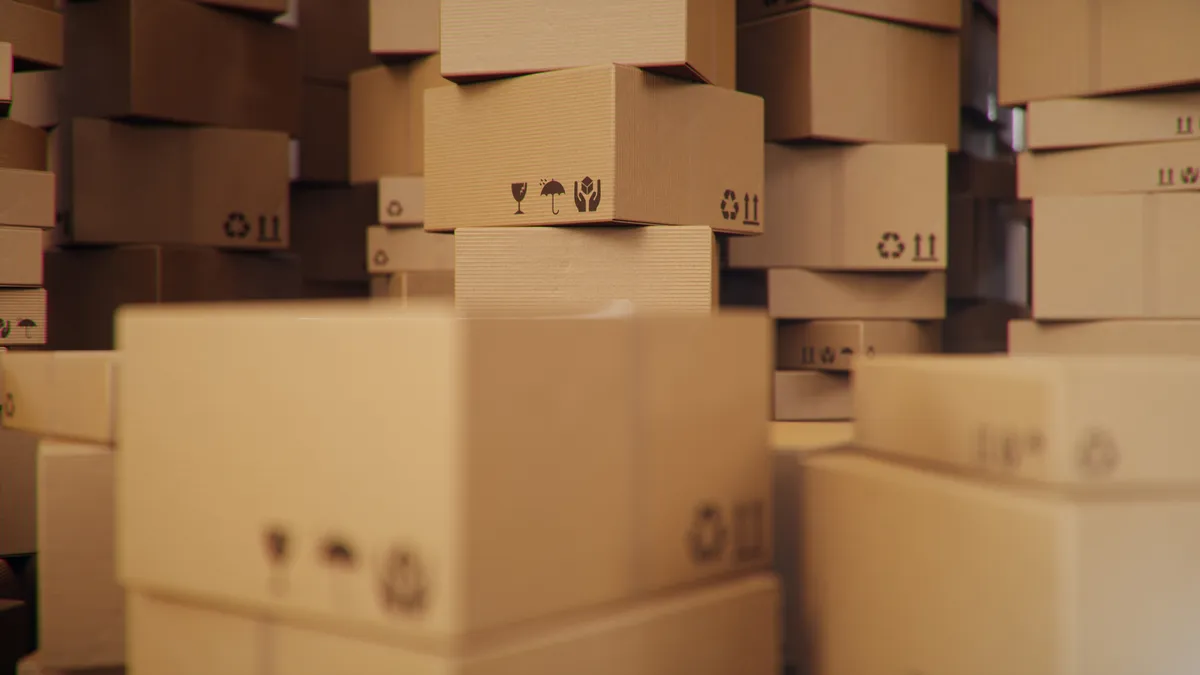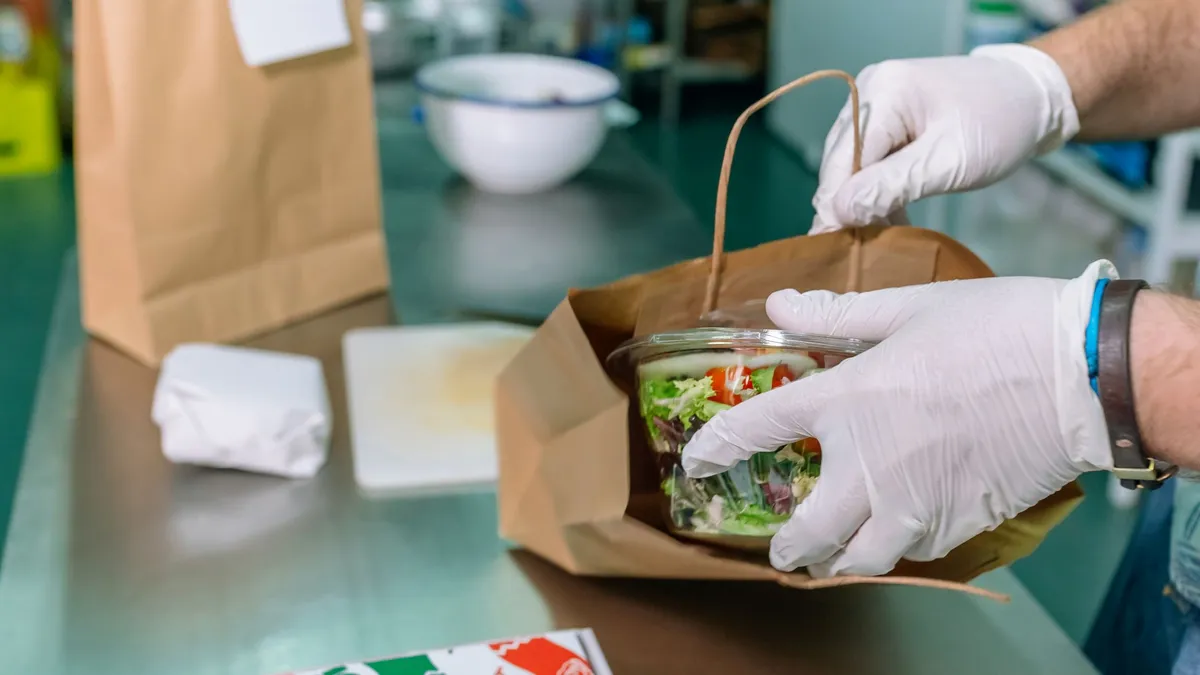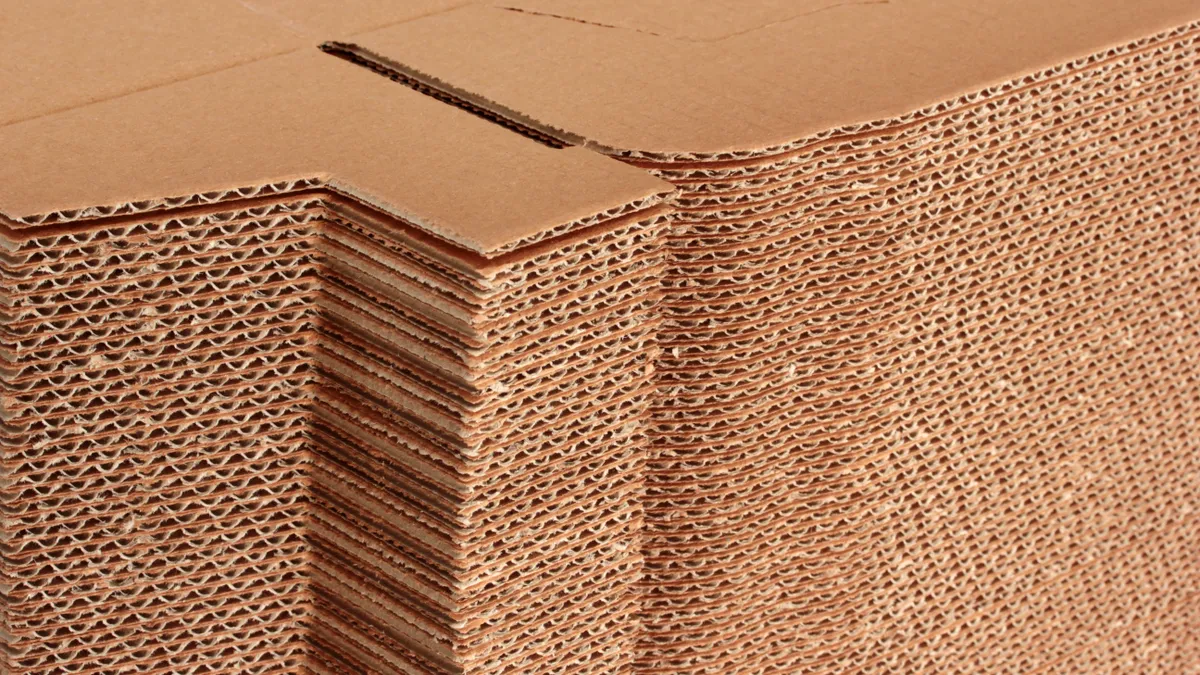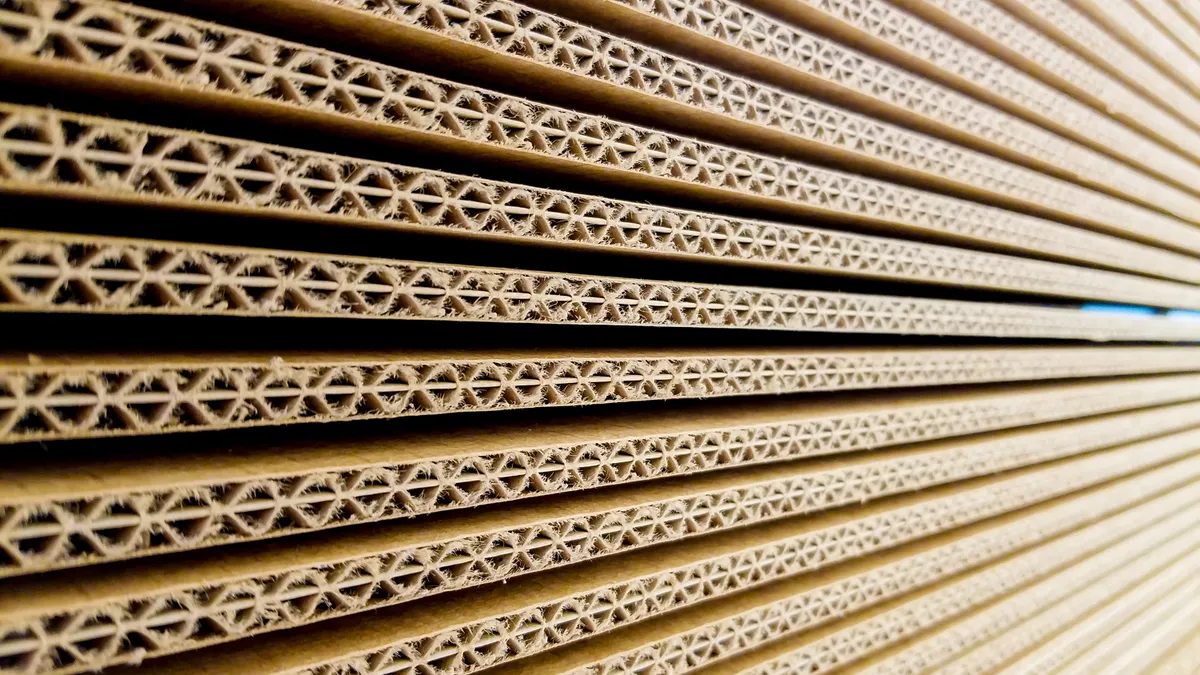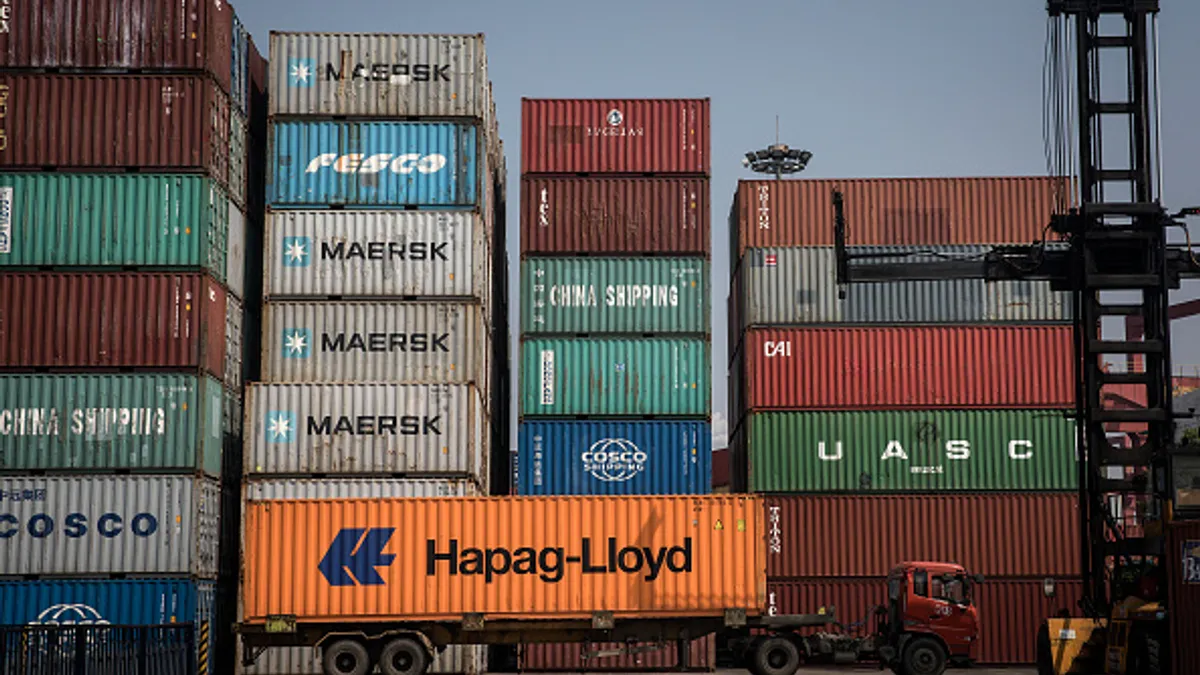The fiber packaging sector appears to be pulling up from the post-pandemic slump it has endured over the past couple of years.
But while analysts point to signs of a demand turnaround — in part thanks to extended producer responsibility legislation and plastic substitution efforts — they caution that fiber packaging producers aren’t out of the woods yet. Further, a pricing controversy continues to smolder and prompt calls for change to pricing models.
The end of a destocking cycle is a main driver for the “largely positive” containerboard outlook for the next 12 months, and analysts expect the volume momentum to continue, according to Bank of America Global Research’s independent corrugated box converter survey, released on April 11. This is the group’s first full Box Survey since September 2023, and the 48th overall since 2003. It was conducted from March 5 to April 4 and had between 20 and 25 respondents.
The recently released survey results show 41% of respondents expect demand in the next two quarters to be “better” or “much better,” and 41% expect it to remain the same. During BofA’s smaller “flash” survey in February, 53% of respondents expected better demand in the next two quarters, and 26% expected it to remain the same.
Growth expectations have softened somewhat since the February survey, the new report said. Respondents still predict growth in the next two quarters, but they believe it will come at a less rapid pace of 0.6%, down from 1.1% in February.
Speakers at an April 11 Fastmarkets RISI webinar, which covered the factors impacting packaging costs in 2024, also noted recent increases in fiber packaging demand. They highlighted how supply and demand dynamics have been off ever since demand surged during the pandemic and dropped afterward.
Fastmarkets RISI reported global paper packaging and board demand in 2023 was 409.7 million metric tons, which was down 3.1% from 2022. “There’s been a lot of volatility,” said Alejandro Mata, Fastmarkets RISI director of European packaging and graphic papers, during the webinar.
He described the 4.7% demand growth in 2021 as above-normal compared with the previous 10 years, but not necessarily unusual coming out of the pandemic.
“We have seen these bumps in demand growth before — every time we have experienced a global crisis,” Mata said. For example, “for many years after the 2008 financial crisis, demand was behaving better than the long-term average.” He said that demand should recover back to the level of the long-term average, 2% to 2.5%, “but it's going to take a little longer to get there.”
While every fiber grade performed better in 2021, containerboard — the largest packaging paper segment overall — showed a precipitous jump. That contributed to a supply and demand imbalance, Mata said, pointing out fiber packaging’s current excess supply of 40 million tons.
That data assumes the markets return to an 88% operating rate — a figure that signifies market balance, according to Mata. Operating rates have been below 80% for about two years and are expected to linger there into 2025.
Fiber companies have overinvested in capacity, Mata said. The trend started even prior to 2020, when operating rates simultaneously were declining.
Changing habits and future opportunities
“Generally speaking, consumers are behaving in a very different way now,” which affects packaging demand, Mata said. Inflation is a major factor influencing consumer behavior, followed by the expanding roles of e-commerce and sustainability in purchasing choices.
“Companies have also started to react to the excess packaging, and sometimes packaging waste, that has been generated through the challenges of keeping up with the demand surge in ‘21,” Mata said, noting efforts to reduce or eliminate packaging.
But the concurrent movement to substitute plastic packaging with fiber options opens up growth possibilities. That’s aided by emerging domestic and foreign EPR legislation, Mata said.
"It is clear that plastic substitution and all the legislations that, at least in Europe, are taking place will offer opportunities for growth going forward," he said. But he cautioned that “not every packaging substitution product will come to fiber-based packaging, either."
These fundamental factors increasingly will drive growth as markets get further from the volatility and shocks that have occurred since 2021, Mata said.
Pricing pressure
Fiber packaging pricing remains a white-hot topic for 2024, according to analysts.
On Friday, Fastmarkets RISI released its monthly containerboard and boxboard pricing index for April in its weekly Pulp & Paper Week publication. All domestic linerboard and boxboard prices remained flat. However, export linerboard pricing increased for the first time in two years following companies’ March announcements of the changes.
Criticism of this pricing index has abounded following widespread containerboard and boxboard converter price hike announcements to start the year.
Fastmarkets RISI’s monthly pricing released on Jan. 19 did not reflect the increases, leading some observers to suggest the markets were rejecting the announced price hikes. Skepticism grew with the Feb. 16 monthly data release, which only reflected partial price hike acceptance: about $40 per ton for recycled and kraft linerboard, which is only about half of the full $70 to $75 per ton increases that packaging companies announced.
During earnings calls earlier this year, numerous packaging company executives addressed the pricing disparity and tried to mitigate chatter that the new prices weren’t sticking. They expressed frustration — both their own and customers’ — about Fastmarkets RISI’s model. Several questioned the index’s relevance in the modern market, considering it only represents the open market, which is less than 10% of the overall.
During Graphic Packaging International’s investor day on Feb. 21, CEO Mike Doss said, “I can absolutely tell you that on cupstock [Fastmarkets RISI] got it wrong.” The pricing listed “made no sense to us,” he said, noting a concerted effort to “move away from third-party indices that really lack any level of what we believe to be accuracy as well as transparency.”
Similarly, during Packaging Corporation of America’s earnings call this week, executives reiterated their ongoing dissatisfaction with the index and described work to incorporate alternative models when determining pricing in customer contracts.
BofA’s Box Survey respondents believe more price hikes are on the horizon. About 70% anticipate higher pricing over the next 12 months for containerboard, and 71% expect higher pricing for boxes. And the proportion of respondents reporting containerboard and box discounts has declined: 31% report discounts for containerboard and 63% for boxes.
Survey respondents generally expect producers to attempt their next containerboard and box price hikes in Q2 or Q3. “Candidly, we are a bit surprised with this view as it doesn't seem consistent with the growth outlook responses, which weakened,” the BofA report said.
But converting costs change over time, and many converters cite inflation-driven production cost spikes as a reason for the recent price increases, said Matt Graves, Fastmarkets RISI senior vice president, during the webinar.
“Over the time of 2020 up until July 2022, the producers were unable to raise prices as fast as their costs were going up,” said Graves. While costs declined through much of 2023, “now costs are drifting back up ... and there’s a lot of question marks from all over the place about current proposals in the marketplace for changes in prices.”
The key question he referenced is why producers would raise prices during a time of tight demand, even accounting for the higher production costs. Typically, prices rise during boom times.
“This isn’t the way this curve usually looks. This is an exceptional time,” Graves said. “I’ve seen times in history where these are absolutely inverse.”
Referencing Friday’s April Fastmarkets RISI data release, Michael Roxland, senior paper and packaging analyst at Truist Securities, said in an April 21 commentary to investors that packaging producers and converters “continue to highlight increased manufacturing and input costs, particularly OCC, which has increased ~248% since January 2023.”
BofA analysts said they expect an OCC shortage to normalize in H2. And as Roxland noted in an April 8 commentary, potentially positive supply, demand and pricing effects stem from ND Paper’s announcement that it’s ceasing operations, at least temporarily, at a facility in Maine and another in Wisconsin.



